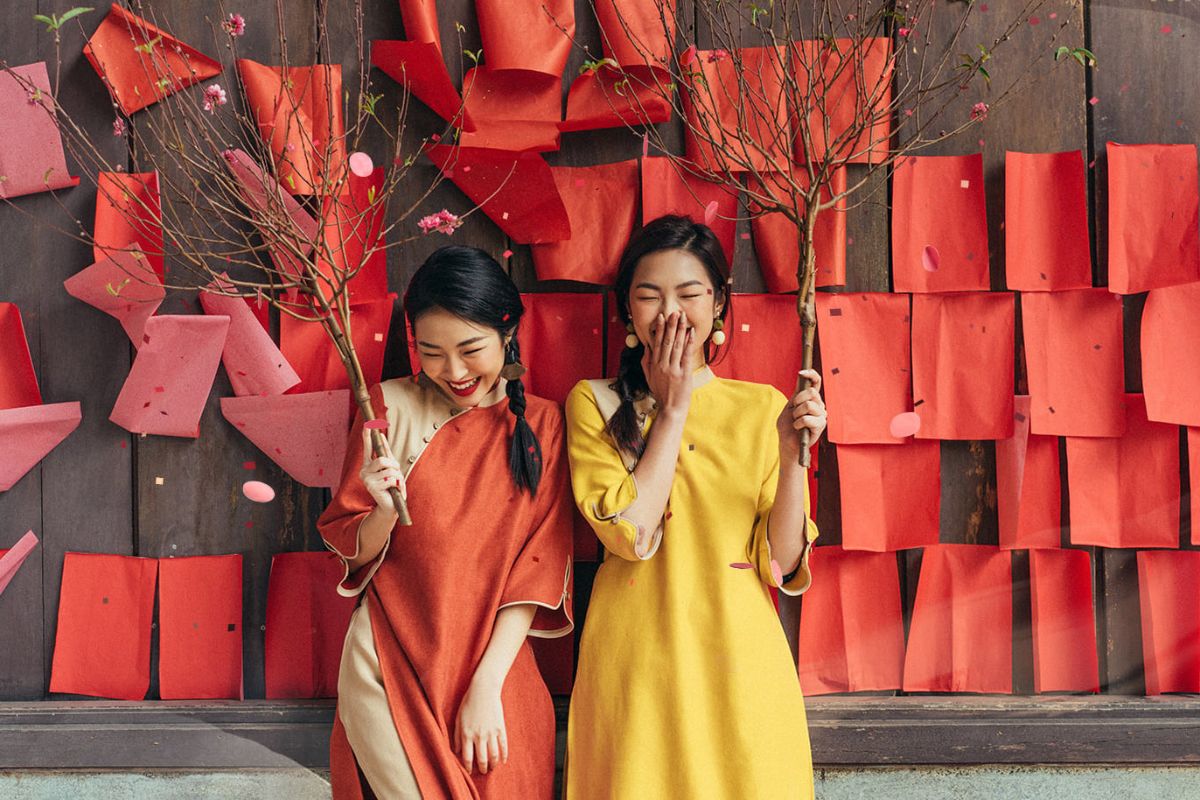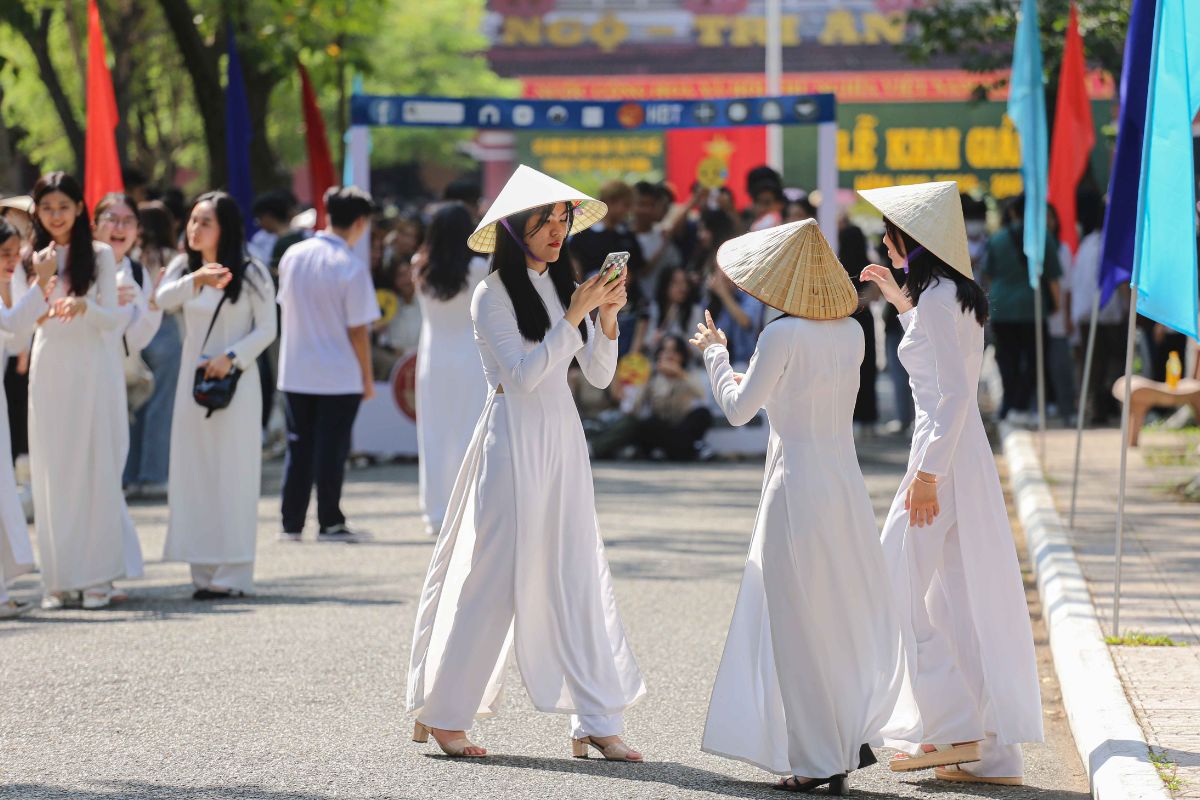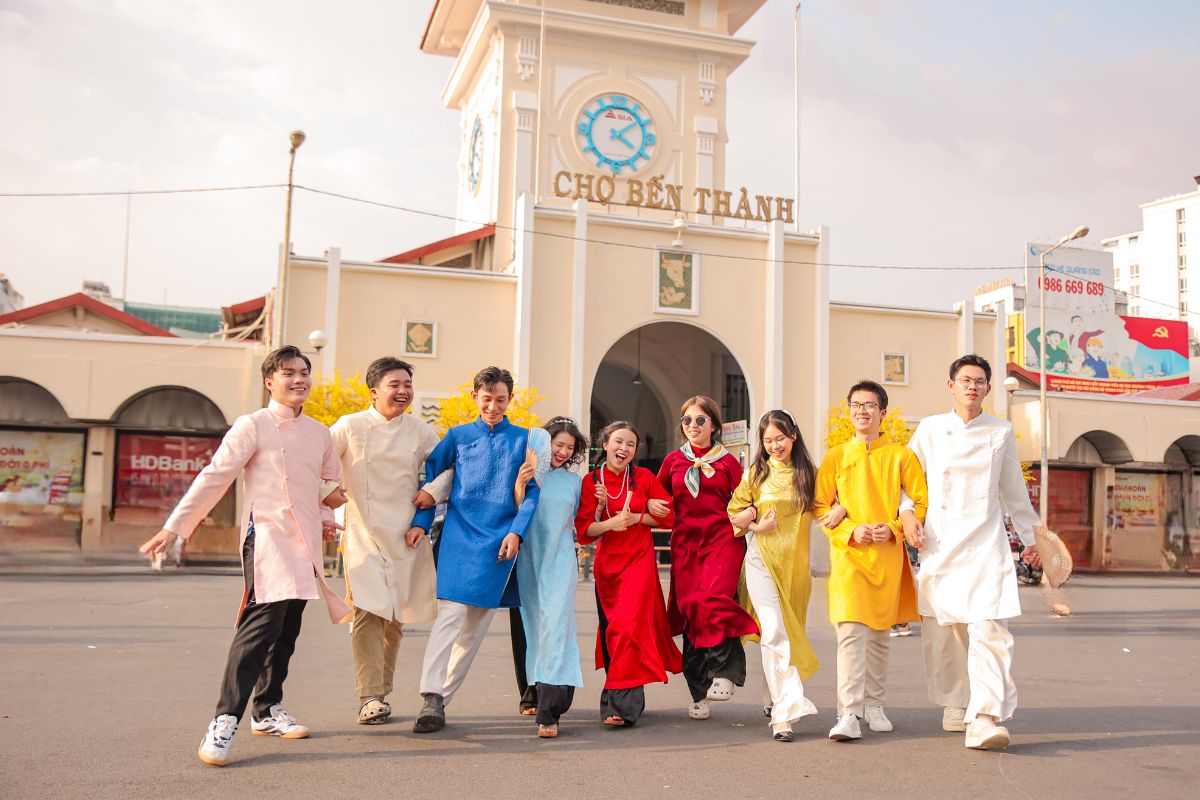TABLE OF CONTENT
The ao dai, a traditional garment of Vietnam, is a magnificent symbol of grace, elegance, and nationalism. You’ve probably seen pictures of people wearing the ao dai—women in flowing silk skirts, or men in stately tunics. What is the importance of the ao dai and why do Vietnamese wear ao dai, nevertheless, beyond just its visual appeal? Let’s dive in and discover what makes the ao dai so special that it’s stood the test of time and still turns heads today.

The history of Ao Dai
The origins of the ao dai can be traced back to the 18th century during the Nguyen Dynasty. It was originally a loose-fitting ao dai worn by both men and women in the royal court. This early version, known as the “ao ngu than” (five-panel dress), consisted of two equal front panels that were tied or buttoned together.
The ao dai started to change throughout time. Ao dai fashion was updated in the 1930s by Cat Tuong, a.k.a. Le Mur, a Vietnamese fashion designer. The fuller, flowing skirt and the more fitting bodice of this new style emphasized the feminine silhouette. This version was the one that won over Vietnamese women’s hearts and laid the foundation for the modern ao dai.
Vietnamese Ao Dai for women
The women’s version of the ao dai is perhaps the most recognizable and widely worn. It typically consists of a tight-fitting tunic worn over wide-leg trousers. The ao dai is slit from the waist down on both sides, creating two elegant pieces of fabric that flow with the wearer’s movements.
Women’s ao dai comes in many colors and patterns, each with its own meaning. White is often worn by high school girls, symbolizing purity and innocence. Bright colors like red or yellow are popular for celebrations like weddings and Tet (Vietnamese Lunar New Year), where they’re believed to bring good fortune.

Vietnamese Ao Dai for men
While the ao dai is often associated with women, men also wear this traditional dress, especially during important ceremonies and events. Historically, the male ao dai was simpler and more subdued in color—often dark shades like blue or black. The tunic is usually less fitted than the women’s version but still carries the same sense of formality and tradition.
In the past, the ao dai was worn by scholars, government officials, and members of the upper class. Today, although it is rarely seen in everyday life, men still wear the ao dai on special occasions, weddings, and cultural events, demonstrating their connection to Vietnamese heritage and traditions.

The evolution of the Ao Dai over time
Like any enduring cultural icon, the ao dai is not a static garment. Instead, it has evolved with Vietnamese society, adapting to changing tastes, lifestyles, and global influences. Its ability to change while remaining true to its core is part of the reason why Vietnamese people still wear the ao dai with pride.
In the mid-20th century, the ao dai experienced a renaissance. Designers began experimenting with new cuts, fabrics, and patterns, creating ao dai that was both traditional and modern. The 1950s and 1960s saw the rise of shorter, more practical ao dai, reflecting the changing role of women in society.
The late 20th and early 21st centuries brought further innovations. Nowadays, you can find modernized ao dai, with many new patterns and innovative seams, so that you can wear it every day.
Despite these changes, the core silhouette and spirit of the ao dai remain intact. The balance between tradition and modernity of the ao dai is increasingly loved by many generations of Vietnamese people, especially the Gen Z generation.
Why do Vietnamese wear Ao Dai?
So, why do Vietnamese wear ao dai? The answer is simple: it’s a symbol of their culture, history, and national pride. Let’s take a closer look at the specific occasions when the ao dai takes center stage in Vietnamese life.
Vietnamese wear Ao Dai on special occasions
Celebrating special occasions is one of the main reasons why do Vietnamese wear ao dai. During Tet, Vietnam’s most important holiday, the streets come alive with women and men dressed in vibrant ao dai, often in lucky red or yellow. Families visit temples or friends gather for a meal, all decked out in their finest ao dai. It is believed that the bright colors and beautiful patterns of the ao dai will bring good luck and prosperity for the coming year.
Ao dai is also worn for other important occasions such as National Day, family reunions, and religious ceremonies. The Ao Dai is a symbol of pride in both personal heritage and national identity, making it the natural choice for these important moments.

Vietnamese wear Ao Dai as high school uniform
In many high schools across Vietnam, particularly in urban areas, female students wear ao dai as their uniform. Students who participate in this practice not only develop a sense of cohesion and identity, but they also acquire an early sense of pride in Vietnamese culture.
The image of young girls gracefully walking down crowded streets in white ao dai has become an iconic image of Vietnam. Why do Vietnamese wear ao dai? The answer is simple: this tradition helps ensure that new generations continue to cherish and wear Ao Dai, keeping the garment relevant in modern times.

Vietnamese wear Ao Dai on engagement and wedding day
Weddings and engagements are very important events in Vietnamese culture, and the ao dai plays a major role in these celebrations. The bride usually wears a bright red or pink ao dai for the engagement ceremony and often chooses a different ao dai on the wedding day itself. Red is considered a lucky color, symbolizing happiness and prosperity.
The groom also wears an ao dai, usually in blue or yellow to complement the bride’s outfit. Ao dai worn at weddings are often embroidered with intricate patterns, often featuring traditional symbols such as dragons or phoenixes to symbolize strength, longevity, and loyalty.
In addition, bridesmaids and groomsmen also wear ao dai to perform rituals on the engagement day. They often wear similar ao dai, in softer colors to help the bride and groom stand out on the big day.

Vietnamese wear Ao Dai in daily life
While the ao dai is often associated with special occasions, it is also worn by some Vietnamese people in daily life. For example, teachers, hotel staff, and flight attendants frequently wear the ao dai as part of their professional uniforms. This helps preserve tradition while introducing Vietnamese culture to visitors from all over the world.
In recent years, the ao dai has also gained popularity as everyday attire, especially among the younger generation. Many modern designs blend traditional elements with contemporary fashion trends, making the ao dai a versatile outfit that can be worn for various occasions, from a casual day out to a formal event.

Make your own Ao Dai in Vietnam
One of the best ways to truly experience Vietnamese culture is to have your own ao dai made while you’re visiting. Across Vietnam, particularly in cities like Hanoi and Hoi An, there are tailors who specialize in creating custom ao dai. You can have a custom-made ao dai by choosing fabric, color, and receive it in just one or two days. You can also ask the tailor for experience or even have personalized embroidery added.
A customized ao dai is a unique and unforgettable experience that allows you to take home a bit of Vietnamese culture in addition to priceless memories of your trip to this nation.
Do you know any hidden wonders of Vietnam? Let’s explore with Asia Encounter in this journey:
So, why do Vietnamese wear ao dai? The ao dai is worn on special occasions and serves to honor tradition, showcasing a sense of cultural pride and celebrating feminine beauty. Above all, the ao dai holds a special place in the hearts of the Vietnamese people. Its timeless elegance and ability to adapt to modern times have ensured its place as a beloved traditional dress that’s still relevant today.
—
Your Vietnam journey is complete with Asia Encounter as your companion. With Asia Encounter, you’ll not just see Vietnam – you’ll experience it, right down to the elegant folds of an ao dai. Come and discover why Vietnamese wear ao dai, and perhaps find yourself falling in love with this timeless garment too.




